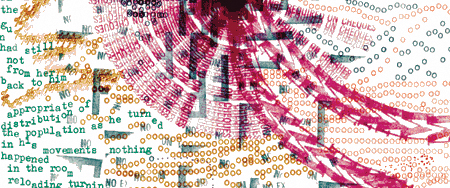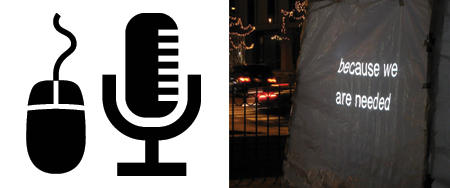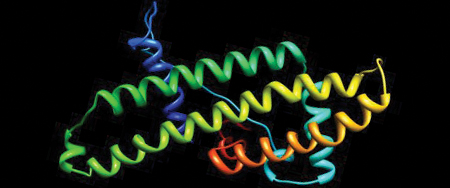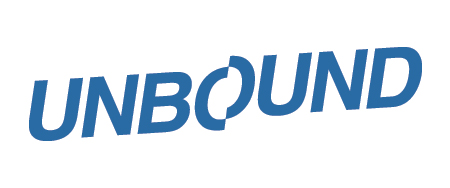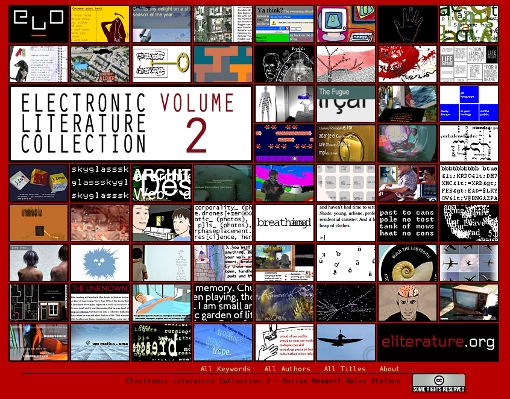At the recent ELO conference in Montréal Leonardo Flores introduced the concept of “3rd Generation” electronic literature. I was at another session during his influential talk, but I heard about the concept from him beforehand and have read about it on Twitter (a 3rd generation context, I believe) and Flores’s blog (more of a 2nd generation context, I believe). One of the aspects of this concept is that the third generation of e-lit writers makes use of existing platforms (Twitter APIs, for instance) rather than developing their own interfaces. Blogging is a bit different from hand-rolled HTML, but one administers one’s own blog.
When Flores & I spoke, I realized that I have what seems like a very similar idea of how to divide electronic literature work today. Not exactly the same, I’m sure, but pretty easily defined and I think with a strong correspondence to this three-generation concept. I describe it like this:
- Pre-Web
- Web
- Post-Web
To understand the way I’m splitting things up, you first have to agree that we live in a post-Web world of networked information today. Let me try to persuade you of that, to begin with.
The Web is now at most an option for digital communication of documents, literature, and art. It’s an option that fewer and fewer people are taking. Floppy disks and CD-ROMs also remain options, although they are even less frequently used. The norm today has more to do with app-based connectivity and less with the open Web. When you tweet, and when you read things on Twitter, you don’t need to use the Web; you can use your phone’s Twitter client. Facebook, Instagram, and Snapchat would be just fine if the Web was taken out behind the shed and never seen again. These are all typically used via apps, with the Web being at most an option for access.
The more companies divert use of their social networks from the Web to their own proprietary apps, the more they are able to shape how their users interact — and their users are their products, that which they offer to advertisers. So, why not keep moving these users, these products, into the better-controlled conduits of app-based communication?
Yes, I happen to be writing a blog entry right now — one which I don’t expect anyone to comment on, like they used to in the good old days. There is much more discussion of things I blog about on Twitter than in the comment section of my blog; this is evidence that we are in the post-Web era. People can still do Web (and even pre-Web) electronic literature and art projects. As Jodi put it in an interview this year, “You can still make websites these days.” This doesn’t change that we reached peak Web years ago. We live now in a post-Web era where some are still doing Web work, just as some are still doing pre-Web sorts of work.
In my view, the pre-Web works are ones in HyperCard and the original Mac and Windows Storyspace, of course. (It may limit your audience, but you can still make work in these formats, if you like!) Some early pieces of mine, such as The Help File (written in the standard Windows help system) and my parser-based interactive fiction, written in Inform 6, are also pre-Web. You can distribute parser-based IF on the Web, and you can play it in the browser, but it was being distributed on an FTP site, the IF Archive, before the Web became the prevalent means of distribution. (The IF Archive now has a fancy new Web interface.) Before the IF Archive, interactive fiction was sold on floppy disk. I consider that the significant number of people making parser-based interactive fiction today are still doing pre-Web electronic literature work that happens to be available on the Web or sometimes in app form.
Also worth noting is that Rob Wittig’s Blue Company and Scott Rettberg’s Kind of Blue are best considered pre-Web works by my reckoning, as email, the form used for them, was in wide use before the Web came along. (HTML is used in these email projects for formatting and to incorporate illustrations, so the Web does have some involvement, but the projects are still mainly email projects.) The Unknown, on the other hand, is definitely an electronic literature work of the Web.
Twitterbots, as long as they last, are great examples of post-Web electronic literature, of course.
With this for preface, I have to say that I don’t completely agree with Flores’s characterization of the books in the Using Electricity series. It could be because my pre-Web/Web/post-Web concept doesn’t map onto his 1st/2nd/3rd generation idea exactly. It could also be that it doesn’t exactly make sense to name printed books, or for that matter installations in gallery spaces, as pre-Web/Web/post-Web. This type of division makes the most sense for work one accesses on one’s own computer, whether it got there via a network, a floppy disk, a CD-ROM, or some other way. But if we wanted to see where the affinities lie, I would have to indicate mostly pre-Web and Web connections; I think there is only one post-Web Using Electricity book that has been released or is coming out soon:
-
The Truelist (Nick Montfort) is more of a pre-Web project, kin to early combinatorial poetry but taken to a book-length, exhaustive extreme.
-
Mexica (Rafael Pérez y Pérez) is more of a pre-Web project based on a “Good Old-Fashioned AI” (GOFAI) system.
-
Articulations (Allison Parrish) is based on a large store of textual data, Project Gutenberg, shaped into verse with two different sorts of vector-space analyses, phonetic and syntactical. While Project Gutenberg predates the Web by almost two decades, it became the large-scale resource that it is today in the Web era. So, this would be a pre-Web or Web project.
-
Encomials (Ranjit Bhatnagar), coming in September, relies on Twitter data, and indeed the firehose of it, so is a post-Web/3rd generation project.
-
Machine Unlearning (Li Zilles), coming in September, is directly based on machine learning on data from the open Web. This is a Web-generation project which wouldn’t have come to fruition in the walled gardens of the post-Web.
-
A Noise Such as a Man Might Make (Milton Läufer), coming in September, uses a classic algorithm from early in the 20th Century — one you could read about in Scientific American in the 1980s, and see working on USENET — to conflate two novels. It seems like a pretty clear pre-Web project to me.
-
Ringing the Changes (Stephanie Strickland), coming in 2019, uses the combinatorics of change ringing and a reasonably small body of documents, although larger than Läufer’s two books. So, again, it would be pre-Web.
Having described the “generational” tendencies of these computer-generated books, I’ll close by mentioning one of the implications of the three-part generational model, as I see it, for what we used to call “hypertext.” The pre-Web allowed for hypertexts that resided on one computer, while the Web made it much more easily possible to update a piece of hypertext writing, collaborate with others remotely, release it over time, and link out to external sites.
Now, what has happened to Hypertext in the post-Web world? Just to stick to Twitter, for a moment: You can still put links into tweets, but corporate enclosure of communications means that the wild wild wild linking of the Web tends to be more constrained. Links in tweets look like often-cryptic partial URLs instead of looking like text, as they do in pre-Web and Web hypertexts. You essentially get to make a Web citation or reference, not build a hypertext, by tweeting. And hypertext links have gotten more abstruse in this third, post-Web generation! When you’re on Twitter, you’re supposed to be consuming that linear feed — automatically produced for you in the same way that birds feed their young — not clicking away of your own volition to see what the Web has to offer and exploring a network of media.
The creative bots of Twitter (while they last) do subvert the standard orientation of the platform in interesting ways. But even good old fashioned hypertext is reigned in by post-Web systems. If there’s no bright post-post-Web available, I’m willing to keep making a blog post now and then, and am glad to keep making Web projects — some of which people can use as sort of free/libre/open-source 3rd-generation platforms, if they like.


